Honoring Tom Smith: Iowa State All-American, World War II fatality
Smith was a third team selection by the Newspaper Enterprise Association in 1940
Tom Smith, an All-American football star from Iowa State, sacrificed his life in service to his country.
Smith, the seventh All-American in Iowa State’s football history, was one of 11 Cyclones listed as dead or missing in action listed in The Daily Nonpareil’s (Council Bluffs) article from Oct. 31, 1944. Forty-four other Big Six Conference athletes were listed as dead, missing in action, or prisoners of war.
Boyhood in Boone
He grew up in Boone, about 20 minutes west of Ames. According to a 1940 Ames Daily Tribune, Smith played the position of center in seventh grade.
“After one game at that position he made two important discoveries: (1) that a center sees most of the game from an upside down point of view, and (2) that as a center most of his future was behind him,” wrote Bernie Kooser for the Ames Daily Tribune.
In high school, he was the quarterback for the Toreadors.
In a 12-0 loss to Mason City early in the Toreadors’ 1935 season, Smith “pulled a muscle in his left arm and played but a few minutes. The coach benched him on a doctor’s orders,” the Sept. 27, 1935, Ames Tribune wrote.
Mike Enich replaced Smith at quarterback following his injury.
Enich, too, was a solid player both at Boone and collegiately: he was an Iowa Daily Press Association first team all-state fullback (listed at 6-1, 217) in 1936, and went to Iowa. He was a member of the Hawkeyes’ "Ironmen" team of 1939, and in 1940, Enich was a first team All-American, team MVP and team captain.
Kooser’s aforementioned article (perhaps a column titled Sports Slants) from December 1940 shared more about Smith’s toughness:
“There's a rumor going round about how Smith learned to tackle and block so much gusto. It seems that the school board acquired a bunch of old telephone poles which can be used for - among other things - as old telephone poles. Smith got the idea of practicing blocks and tackles on them and before long both be and Enich could throw a cross-body block that would snap a pole in two.”
In a 53-7 win over Eldora Smith’s senior year at Boone, he was named to the Des Moines Tribune’s weekly high school football honor roll with two rushing touchdowns to his name. The following week was a 7-6 conference loss to Oskaloosa. Smith’s 20 yard pass to halfback Summers was the only Toreador score.
College days
Anecdotes from the fall of Smith’s freshman year at Iowa State include: being one of 109 of his freshman peers out for freshman football (coached by Louis Menze, head men’s basketball coach at ISC), pledging with the fraternity Kappa Sigma and at the end of the football season, he earned numerals (freshman equivalent of a letter) as a back.
Under the direction of (varsity) head coach Jim Yeager in 1937, Smith switched to left guard.
Smith’s first appearance as a Cyclone letterwinner, as he was from 1938 to 1940, was as a substitute in the Cyclones’ 32-7 home victory over Luther (Decorah). Smith also came off the bench in Iowa State’s 8-7 win over Nebraska in Lincoln. The win was ISC’s first against the Cornhuskers since 1919.
In a narrow 16-13 victory over Missouri, 21 years before the game that berthed the Telephone Trophy, Smith started at left guard. Smith started the following week against the Jayhawks, too. In the Cyclones’ penultimate game of the season, a 13-13 tie with Kansas State, Smith had his final start of the legendary 1938 season in which Iowa State had a record of 7-1-1.
After opening the 1939 season as a left guard during the Cyclones’ 19-0 victory against Coe, Smith slotted over to right guard, heir apparent to All-American and College Football Hall of Famer, Ed Bock.
In the 21-6 loss to Missouri, Smith’s recovered a blocked punt.
Smith returned to left guard in a 21-2 loss at Marquette, but in a surprising 10-0 upset over Kansas State, he moved to right tackle, where he became the signal caller for the offense.
“He directed the offense with poise and precision,” wrote the Des Moines Register in the recap following the game.

Captain Smith
For the 1940 season, coach Yeager named the Boone native captain.
During the nine game slate that season, Smith “won eight of nine pre-game tosses during the season,” wrote the Iowa City Press-Citizen in December 1940. In the same article, coach Yeager was quoted as saying “(Smith) came back with the officials’ coin in the Nebraska game.”
Smith was named a third team All-America selection by the Newspaper Enterprise Association, and an honorable mention All-America selection by United Press. He received more than five votes, 17 to be exact, to be listed honorable mention by UP.
The Dec. 18, 1940, Des Moines Tribune, wrote the following about Smith:
“There are dozens of stories about Smith because, in addition to being a good captain, he earned quite a reputation as a wisecracker and a wit. The best known story about Smith concerns a haircut he got last year. Yeager had been "riding" Tom about not being very fast. One day Smith came to practice with his hair cut so close it almost looked shaved.
"Coach,” said Smith, “I'm sacrificing everything for speed."
Then, there was the time when Ernest Quigley, St. Marys, Kan., was refereeing an Iowa State game. Quigley found a cleat on the field and called the teams together. He inspected the shoes of all the players but there were no cleats missing.
"It might be a good idea, Mr. Quigley," said Smith, "If you looked at your own shoes."
Quigley looked and the mystery was solved.
Against Oklahoma this year, Smith played opposite a 260-pound lineman who complained that Tom was playing a bit rough. Finally the Oklahoman started to tell the referee about it.
"If I were your size," Tom (listed at 190 pounds) said to his opponent, "I'd do something about it without going to the referee."
Smith: Off to War
Smith, 21, registered for the draft on Oct. 16, 1940 at the Boone City Hall. In 1941, Smith was named ISC Athlete of the Year, according to the Iowa State University Foundation.
Per the Des Moines Tribune, he enlisted in the Navy Air Corps in late March 1942.
His gridiron glory continued after he enlisted. Smith played right guard for St. Mary’s Pre-Flight and at the end of the season was named an All-Navy Pre-Flight Cadet All-American. The Air Devils went 6-3-1, including a 13-6 win over No. 14 Santa Clara. St. Mary’s lost the final three games of their season: at No. 12 Stanford, at California and at No. 14 USC.
The AP Service Poll had the Air Devils at No. 5 in their final rankings.
In February 1943, Smith finished a pre-flight course in California and had further flying instruction in his future. Also in February of ‘43, Smith was promoted to Ensign, and was stationed in California as an instructor for lighter-than-aircraft technique at Moffett Field.
Lt. Smith visited his family in either late August or early September, as reported in the Des Moines Sunday Register on Sept. 3, 1944. Per the paragraph, he is with the “navy ‘blimp’ school’.
A month and two weeks after that was published, Oct. 17, 1944, Smith and five others died in a Goodyear K-111 blimp crash on Catalina Island (about 48 miles from Los Angeles).
His name, along with his Cyclone teammate Griswold, and many others are in the Memorial Union's Gold Star Hall on campus.
Tom Smith’s nephew, Tom Smith carried on his namesake’s Cyclone legacy with a bachelor of science conferred in 1968 and a master’s degree in 1971, both in geology. In 2015, Dr. Smith, an inventor and KINGDOM geophysical software developer for PC was named a distinguished alumnus.
A 2019 Veteran’s Day post by the Iowa State University Foundation shared a picture of Smith with Iowa State President Wendy Wintersteen and his uncle’s blanket.






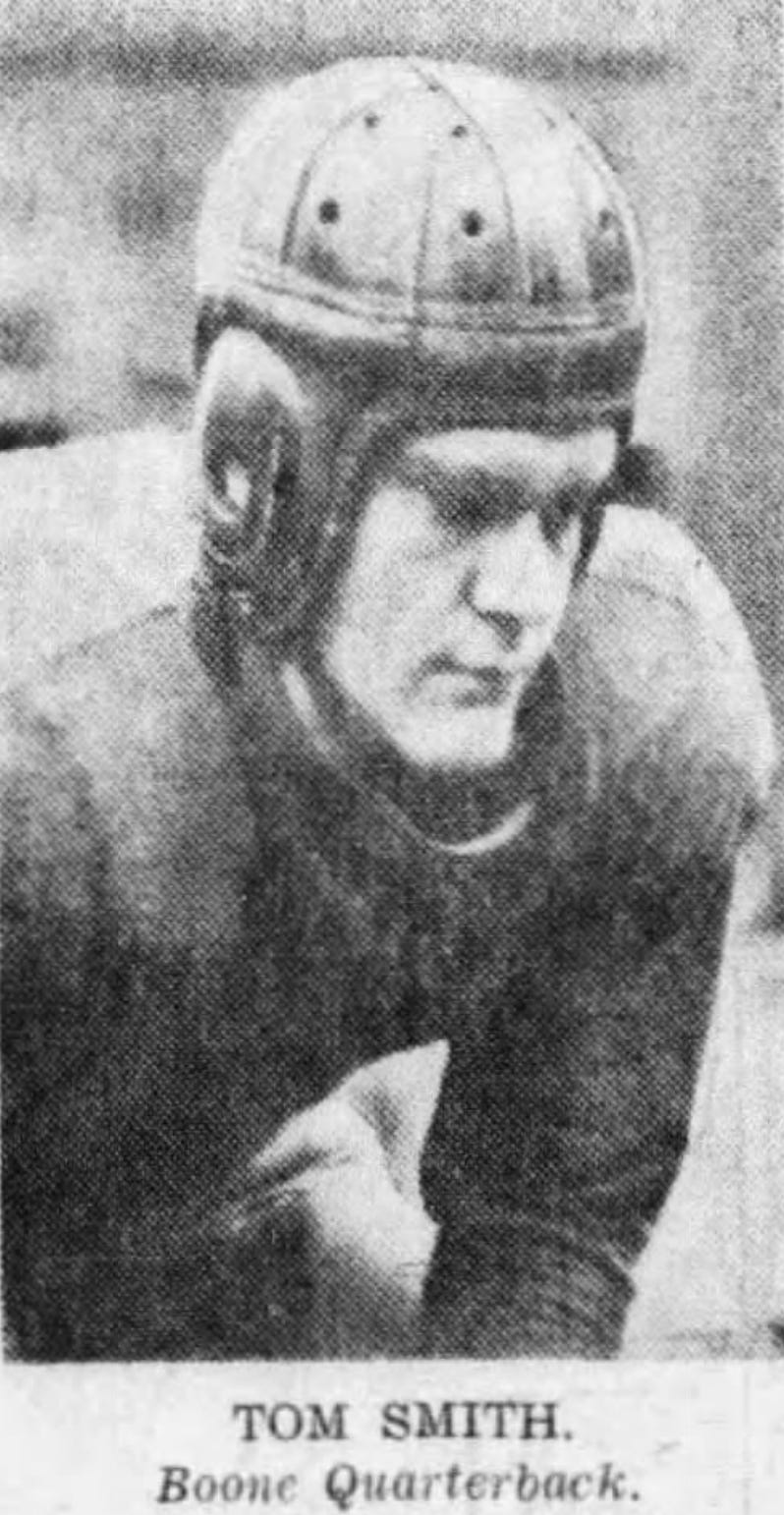




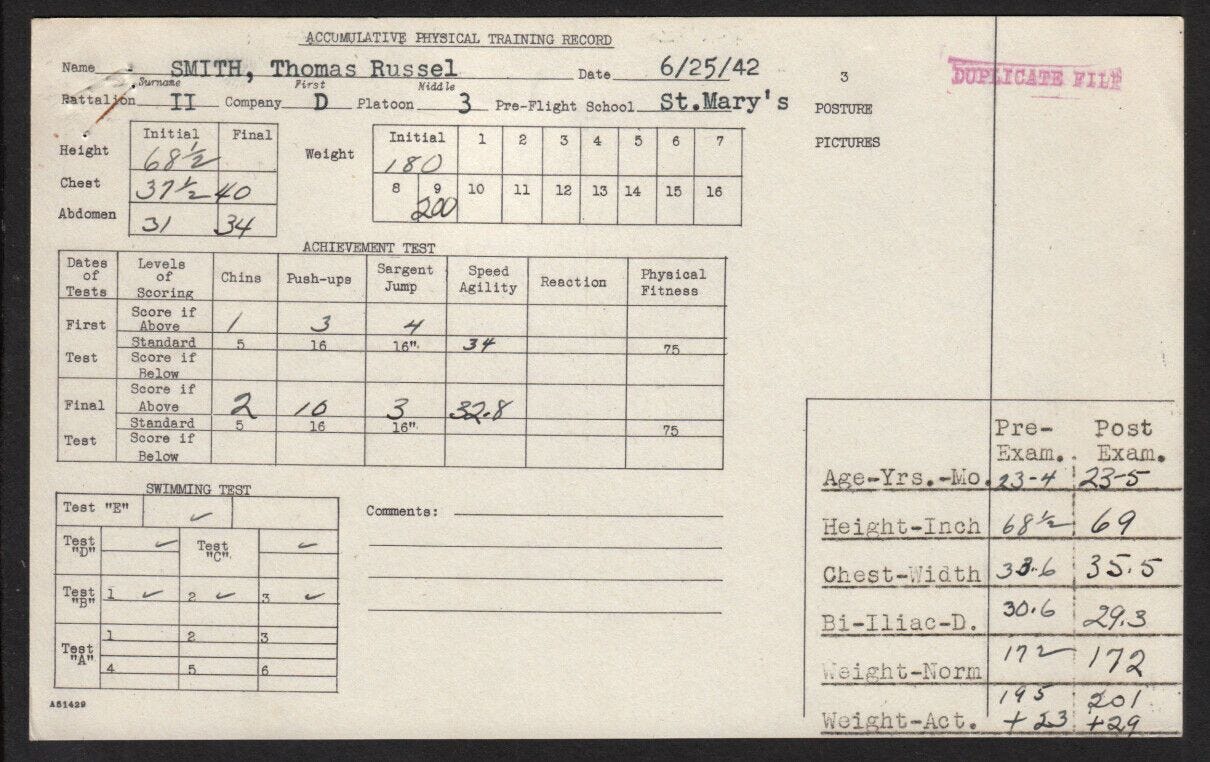

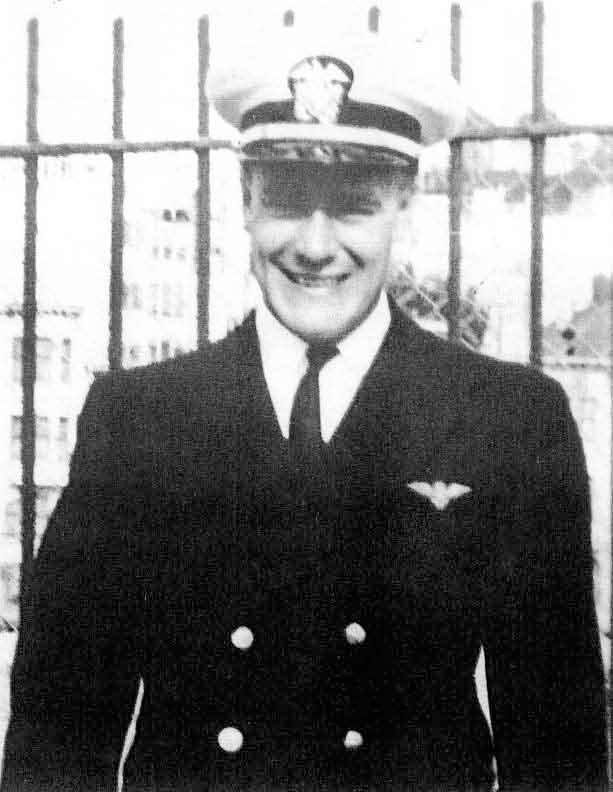
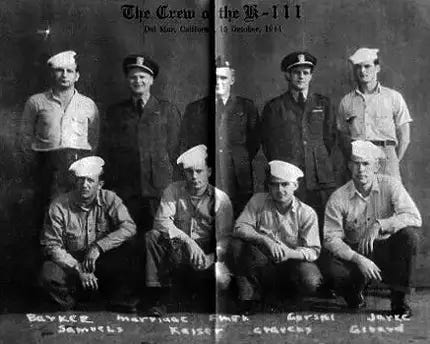
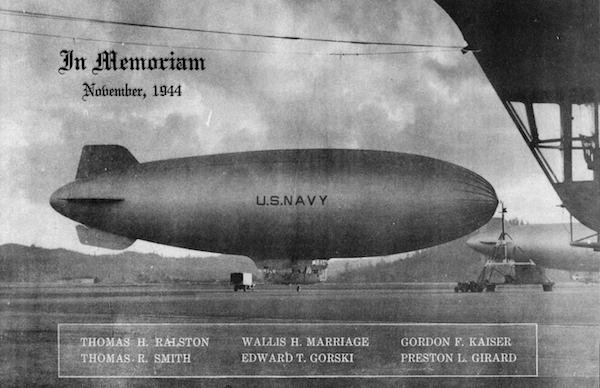

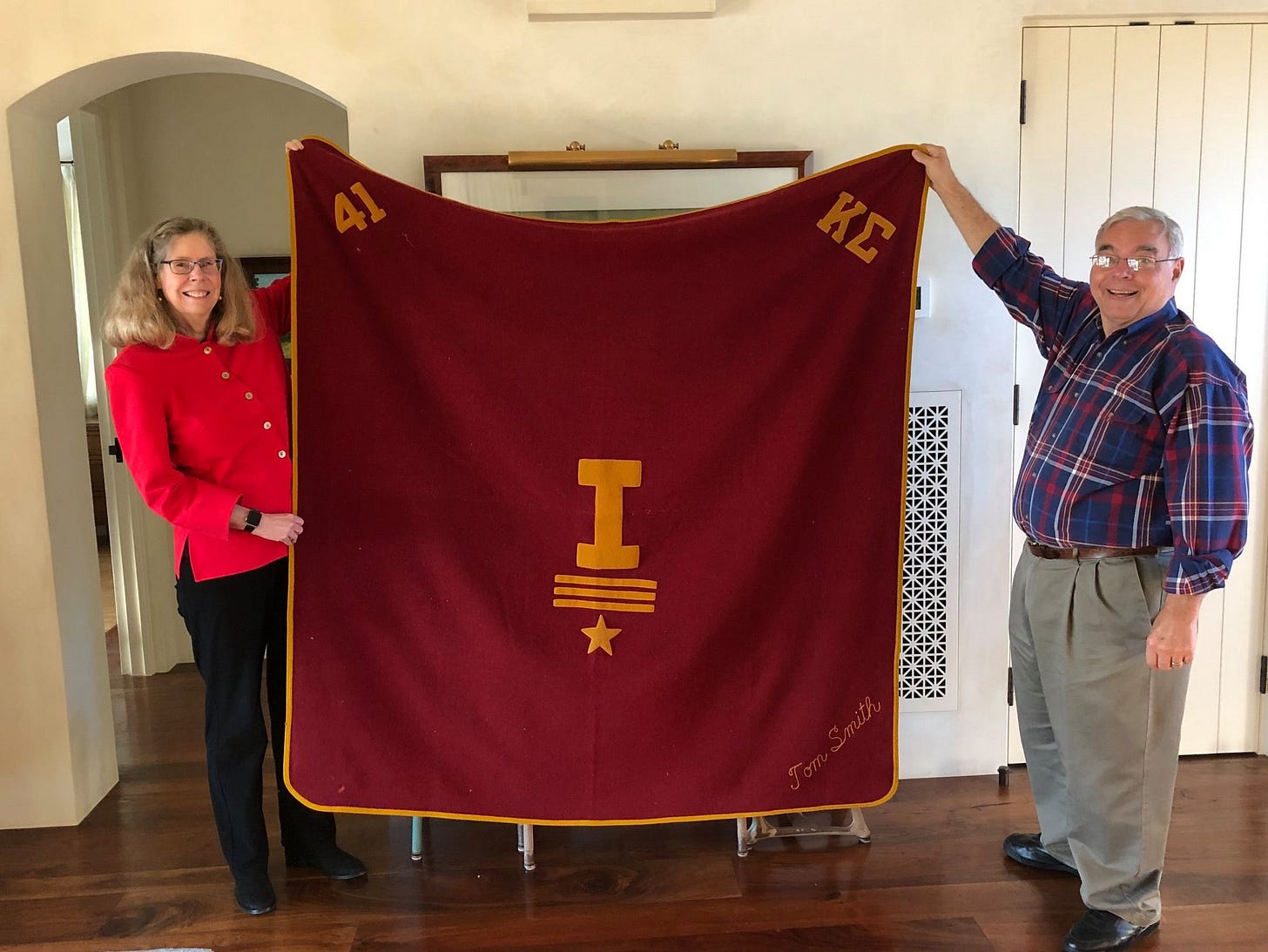
Oh my goodness! You hit it out of the park with this one! What a fantastic legacy. I think it is very important to keep stories like this alive and remembered.
Nice Job Jared. I guess you were working on this while you were in the hospital. Fantastic!